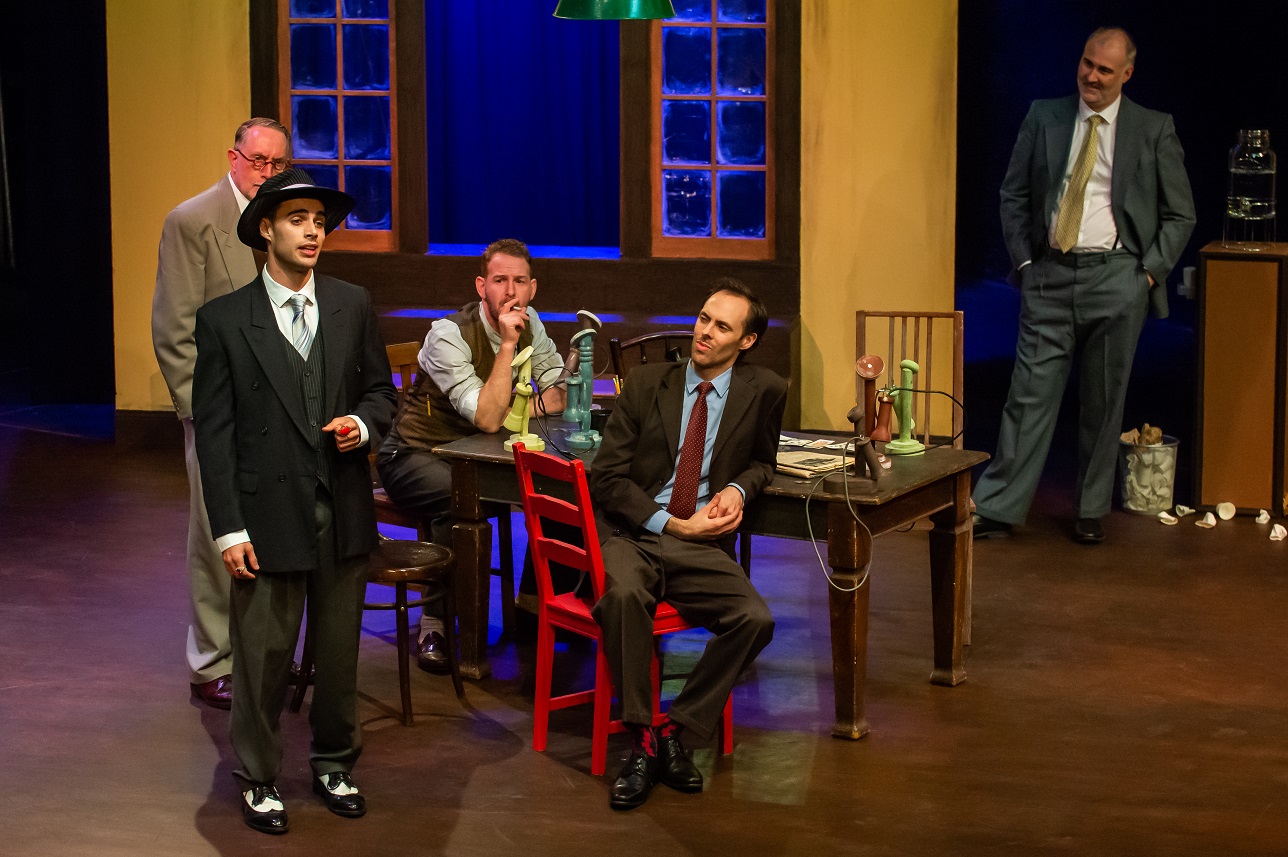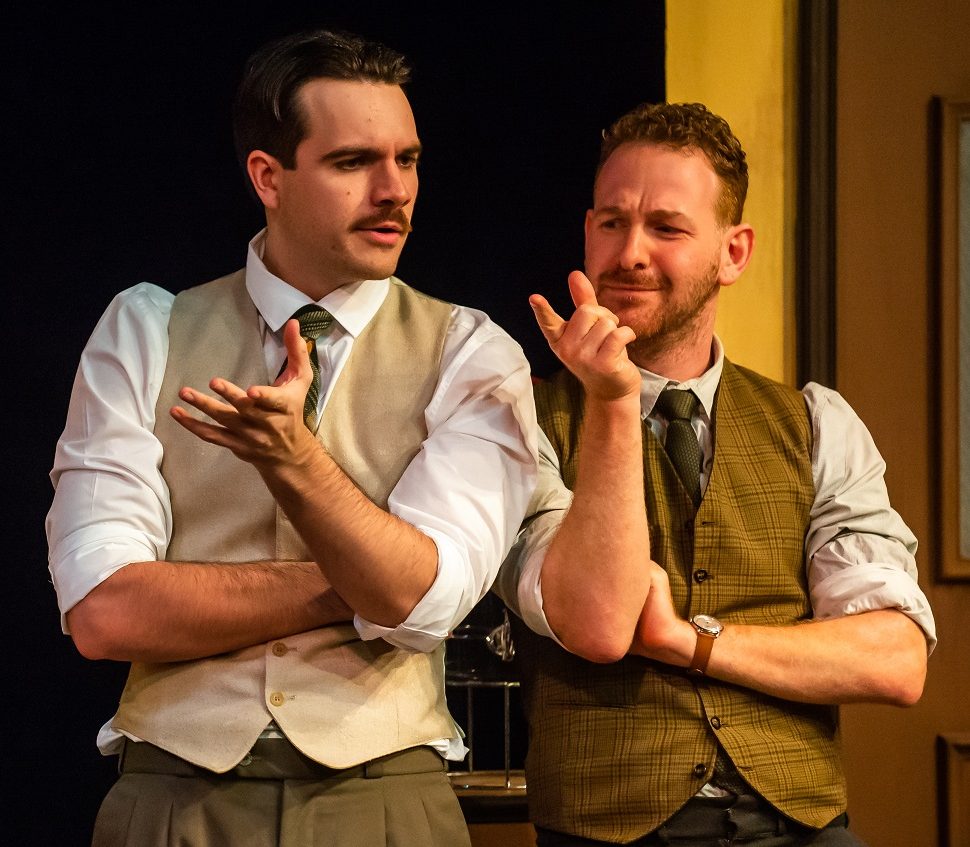By Ben Hecht and Charles Macarthur, adaptated by Nicholas Papademetriou. New Theatre, Newtown. April 23 – May 18, 2024
Reviewed : April 28, 2024

From the opening moments of his adaptation of The Front Page, director Nicholas Papademetriou sets a quick pace that continues for 100 impressive minutes. The dialogue is fast but exceptionally clear. The action is just as fast. Every movement is tightly choreographed. Every character is sharply defined. The comedy is snappy too!
First performed in 1928, Ben Hecht and Charles MacArthur’s play has gone through many stage and screen iterations. This adaptation adds Papademetriou’s imagination, contemporary staging, colour and more female charcters – none of which takes away from the insight of the original.

Papademetriou believes that a play, regardless of its genre, should be entertaining, and if there is also some social comment that is a “welcome by-product”. In this “wisecracking, Broadway farce” he says “are issues that are as potent today as they were when it premiered: corruption in politics, media manipulation, sexism, racism gender inequality as well as an insight into the world of journalists”.
He’s not wrong! It’s all there – along with some romance, a delayed hanging, a jail escape and a jump from a window!
Papademetriou’s adaptation of Hecht and MacArthur’s original script, the newshounds of the 1930s and the ‘scoops’ that made them tick is insightful. His direction is meticulously planned and timed, showing the same perception and definition that is evident in his acting.

In the press room of a Chicago Courthouse reporters await the hanging of a local miscreant, their banter and frequent phone calls interrupted by the noise of weights being “tested” on the gallows below. When the prisoner escapes bedlam ensues. Reporters, police officers, the prisoner’s girlfriend, the sheriff, the mayor and the prisoner himself charge in and out, shouting instructions and arguing. In the midst of this a love triangle is resolved, a court messenger bribed, a reprieve buried and a prisoner concealed.
Eighteen actors whisk the audience through this mayhem, seldom missing a beat of the pithy script or Papademetriou’s complex blocking and zippy pace. They work as a tight ensemble, making every character significant to the action, especially the newshounds – David Allsop, Barry French, Bruce Griffin, Gerry Mallaly, and Reuben Solomon – who are the backbone of the action.

Papademetriou introduces Hildy Johnson, a talented reporter played with cool aplomb by Rose Treloar who makes Hildy slick and a bit brash, well able to hold her own in the bristly male environment of the pressroom. Rita Bensinger, another female reporter, played by Georgia Nicholas, takes the ribbing from her male colleagues with gritty nerve … and a flouncy flip of the hips on her final exit.
Some roles, though small, are memorable because of their comedic clarity: Cassady Maddox Booth’s depiction of the earnest, young policewoman, Officer Eichhorn; Braydon May’s wide-eyed innocence as magistrate’s clerk Samuel Pinkus; Callum Stephen’s enthusiastic press ‘goffer’ Diamond Louie. And the condemned man, Earl Williams, played by Diego Retamales, who’s jumpiness and sad, scared face add extra frenzy to the pace of the press room.
Designer Paris Burrows met Papademetriou’s directorial vision of a stylised set that would off-set the “hyper reality” of the text but also represent the “actual world beyond the pressroom” by opening up the full width and depth of New Theatre stage. Free standing doors and a large, double window establish the boundary of pressroom. Through the door shadowy spaces become the entry to the pressroom corridor, and beyond that a hallway and the suggestion of stairs to lower levels extend the perspective.

Burrows also adds colour rhythm to the production: a red chair and Treloar’s red tie and shoes; Nicholas’s green scarf and a green hanging light; the different colours of the seven phones on the press desk. Lighting designer Michael Schell accentuates that rhythm, swelling it at times, especially in the void beyond the windows that seems to be lit from street lights below.
This is another of New Theatre’s productions that should not be missed – especially in this post-Covid time when companies are still wary of illness and steer away from the challenges of large cast productions.